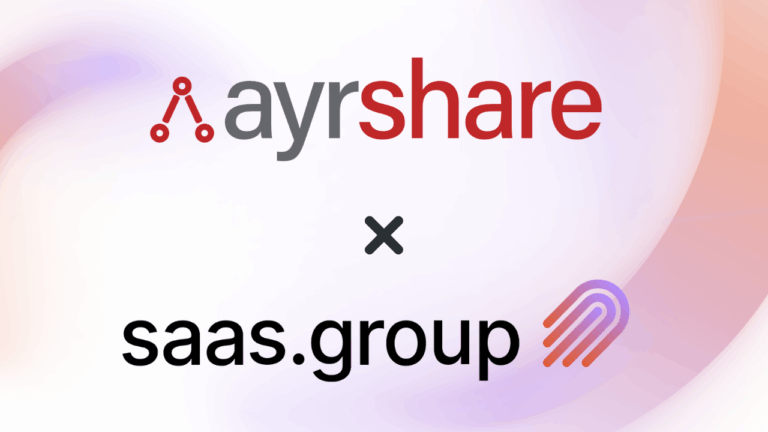At saas.group, we’ve been focused on buying bootstrapped companies from the beginning. Some brands, like Prerender and ScraperAPI barely had employees (besides the founder) when we bought them. But over the years, we’ve started buying bigger businesses that have raised some Angel or VC funding. We bought several of these companies (Zenloop and Beekast, to name a couple), and after reflecting on what we liked and didn’t like, we realized that it’s not about the funding model but more about the mentality of the founders.
There’s huge pride in how bootstrapped founders take ownership and accountability for their products. As the ultimate decision-makers, they thrive in the face of resource constraints. Efficiency is everything, and having a hustle mindset helps you move faster and achieve more enjoyable results.
To add to that, running a bootstrapped company also compels you to focus on essential Key Performance Indicators (KPIs). When we start working with brands, we focus on that. It might sound boring, but at the same time, having a clear idea of your goals and success measurements gives us a much better perspective on missed opportunities.
Monetization is another important aspect we look for. Even with funding, it’s all about wise capital allocation. We like to work with founders who treat capital as a scarce resource and use it accordingly. For example, actively finding ways to reduce costs, buying software instead of building it, and being cautious with pricing and other offerings. Remote work setups are also one of the things we find very effective in reducing the cost of operating a business – in addition to the flexibility, diversity, and productivity they bring.
Here are some other elements that define the bootstrapping mentality. These elements enable startups to succeed with limited external funding.
- Needs over wants: When you’re financially disciplined, you tend to prioritize needs over wants and be conscious of cash flow. There is always the next best thing on the market that your development or marketing teams want to try. But chasing after shiny things rarely boosts your profitability. Analyze every possible expense and only go for it if there’s revenue to balance it out.
- Hiring the best talent: It’s a quality-over-quantity situation. Only hire when you really need it. It doesn’t mean you have to stretch your team too thin, but make sure to align the company’s best interests with your hiring strategy.
- Experiment and test: As important as it is to have structure and a growth strategy in place, it doesn’t have to stop there. Leverage tools and outlets that might not feel intuitive at first but could help in the long run. Use the power of meaningful networking and collaboration. Look out for partnerships and alliances that can help you reach a broader audience. Some of those experiments will fail, but you will learn from the trials and develop a roadmap that works for you. This iterative approach helps to stay competitive and responsive to market dynamics.
- Focus on the product: Sales and marketing can only take you so far before you stagnate. If the product doesn’t deliver value, it’ll be very difficult to retain customers. Retention is key, as companies are very cautious about trying new things right now. Build a fan base that can advocate for the product; they are the best marketers you need.
- Self-reliance and resourcefulness: As there is little or no external support, you should rely on your own skills and resources to grow your operations. Making creative decisions, repurposing existing tools, and leveraging low-cost marketing strategies to acquire customers is a great way to minimize external dependencies even further.
- Make profitability a #1 priority: Profitability is the lifeblood of bootstrapped companies. Delaying revenue generation would mean no profits to reinvest in future growth. If you’re bootstrapping, there is no time to waste, as it would mean draining the life out of business. A strong focus on profitability and sustainable growth helps to clearly identify the roadmap and effectively deal with downturns.
- Customer-centric approach: The customer is the best friend of any SaaS business. But even more so for those bootstrapping. Connecting closely with the users to seek feedback, building a loyal customer base, and iterating quickly help drive organic growth. Giving your customers a sense of ownership and engaging them in product development creates an additional viral loop through word-of-mouth recommendations.
Bootstrapping doesn’t mean you’re in survival mode all the time. You don’t have to say no to everything. It’s cautiousness, financial prudence, and a strong focus on profitability to achieve sustainable success, and that’s exactly what we’re looking for at saas.group.
If our values speak to you and resonate with how you do business, get in touch. Discuss your options with our M&A team: Dirk (dirk@saas.group) or Pavel (pavel@saas.group). Learn more about how we grow acquired brands on our blog and podcast pages.
Table of Contents
Weekly newsletter
No spam. Just the latest news and articles from the world of SaaS and Acquisitions.




